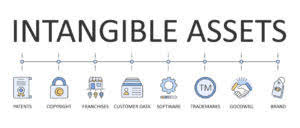Лото Клуб Вход
05/08/2024En Popüler Kaçak Oyun Siteleri 2024 Güncel Liste
09/08/2024
Learn the nuances of the term “transaction” in accounting in this quick guide. A high-volume transaction, such as a billing to a customer, may be recorded in a specialized journal, which is then summarized and posted to the general ledger. Alternatively, lower-volume transactions are posted directly to the general ledger. The types of information required for making a transaction typically depend on the type of transaction being conducted. However, common types of information required may include name, address, payment details (e.g. credit card or bank account), and contact details. Transactions provide a secure and efficient way to exchange value between parties.

How to Make a Journal Entry

In single-entry accounting, every transaction is journalized as a single transaction. As https://x.com/bookstimeinc a freelancer, the single-entry method might be all you need. You’d want to record that payment as a journal entry to log the transaction. Each journal entry typically records the date, the account you’re debiting or crediting and a brief description of the transaction that occurred. Here is an additional list of the most common business transactions and the journal entry examples to go with them.

Step 2 of 3
Accrual accounting is more accurate overall but more complex to manage and understand. A financial professional will offer guidance based on the information provided and offer a no-obligation call to better understand your situation. Transactions can take place in person or online using payment platforms such as credit cards, debit cards, or digital wallets. The $10,000 is your owner’s online bookkeeping equity and is the first transaction in your books. You decide to open up a small business selling a wide variety of handmade items. After you save up the money, you deposit the cash into a new business bank account.
Analysis of Business Transactions FAQs
- Similarly, the funds spent on them can affect its resources and obligations.
- So, remember to record every transaction carefully and promptly.
- The last way to look at accounting transactions is by reviewing the objective of the transaction itself.
- The primary financial statements include the balance sheet, income statement, cash flow statement, and statement of changes in equity.
- The structure of a business refers to the position of its assets and ownership.
The accounting process includes summarizing, analyzing, and reporting these transactions to oversight agencies, regulators, and tax collection entities. This transaction also has a monetary value and is the opposite of the sale transaction. Companies must record this transaction transaction analysis accounting as it is crucial in presenting a fair view in the financial statements. Usually, companies use the following journal entries to record the accounting transaction as below. External transactions have to do with money flowing to or from external parties.


Every debit on one account is balanced by a credit to another account. One of the important features of a transaction is the dual aspect. According to the double-entry accounting system, each transaction must have two parties. However, when a purchase order is placed for a product, this event has no impact on the accounting equation, so it is not a transaction.
- They tend to belong to larger companies, or established small businesses.
- It is not recorded in the accounts book if there is a credit transaction.
- Mr. John was appointed as accountant on a salary of $16,000 per month.
- Finance Strategists has an advertising relationship with some of the companies included on this website.
- Thus, every accounting transaction results in a balanced accounting equation.
( . Identifying the accounts involved:
In the example used above, cash is going to leave the business when the rent is paid, so the cash account should decrease. The amount of rent paid is going to increase, so the rent expense account should increase as a result of the transaction. The structure of a business refers to the position of its assets and ownership. A structural change in the business occurs when there is a change in the assets of the business without any change in profit and loss as a result of the transaction. There can be no such thing as a transaction if no goods or services are exchanged.As a result, one party will transact with the other to exchange goods or services.